| 첨부 '1' |
|---|
| author | Minhaeng Cho |
|---|---|
| journal | Acc. Chem. Res., 2017, 50 (4), pp 968–976 |
| Homepage | http://cmsd.ibs.re.kr/html/cmsd_en/ |
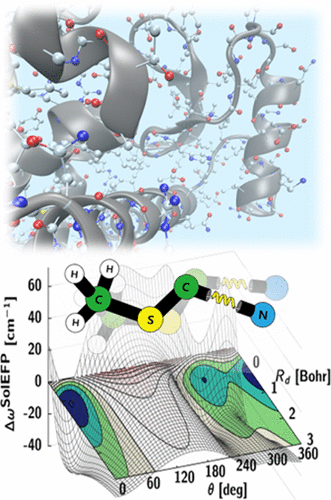
The vibrational frequency of a chosen normal mode is one of the most accurately measurable spectroscopic properties of molecules in condensed phases. Accordingly, infrared absorption and Raman scattering spectroscopy have provided valuable information on both distributions and ensemble-average values of molecular vibrational frequencies, and these frequencies are now routinely used to investigate structure, conformation, and even absolute configuration of chemical and biological molecules of interest. Recent advancements in coherent time-domain nonlinear vibrational spectroscopy have allowed the study of heterogeneous distributions of local structures and thermally driven ultrafast fluctuations of vibrational frequencies. To fully utilize IR probe functional groups for quantitative bioassays, a variety of biological and chemical techniques have been developed to site-specifically introduce vibrational probe groups into proteins and nucleic acids. These IR-probe-labeled biomolecules and chemically reactive systems are subject to linear and nonlinear vibrational spectroscopic investigations and provide information on the local electric field, conformational changes, site–site protein contacts, and/or function-defining features of biomolecules.
A rapidly expanding library of data from such experiments requires an interpretive method with atom-level chemical accuracy. However, despite prolonged efforts to develop an all-encompassing theory for describing vibrational solvatochromism and electrochromism as well as dynamic fluctuations of instantaneous vibrational frequencies, purely empirical and highly approximate theoretical models have often been used to interpret experimental results. They are, in many cases, based on the simple assumption that the vibrational frequency of an IR reporter is solely dictated by electric potential or field distribution around the vibrational chromophore. Such simplified description of vibrational solvatochromism generally referred to as vibrational Stark effect theory has been considered to be quite appealing and, even in some cases, e.g., carbonyl stretch modes in amide, ester, ketone, and carbonate compounds or proteins, it works quantitatively well, which makes it highly useful in determining the strength of local electric field around the IR chromophore. However, noting that the vibrational frequency shift results from changes of solute–solvent intermolecular interaction potential along its normal coordinate, Pauli exclusion repulsion, polarization, charge transfer, and dispersion interactions, in addition to the electrostatic interaction between distributed charges of both vibrational chromophore and solvent molecules, are to be properly included in the theoretical description of vibrational solvatochromism. Since the electrostatic and nonelectrostatic intermolecular interaction components have distinctively different distance and orientation dependences, they affect the solvatochromic vibrational properties in a completely different manner.
Over the past few years, we have developed a systematic approach to simulating vibrational solvatochromic data based on the effective fragment potential approach, one of the most accurate and rigorous theories on intermolecular interactions. We have further elucidated the interplay of local electric field with the general vibrational solvatochromism of small IR probes in either solvents or complicated biological systems, with emphasis on contributions from non-Coulombic intermolecular interactions to vibrational frequency shifts and fluctuations. With its rigorous foundation and close relation to quantitative interpretation of experimental data, this and related theoretical approaches and experiments will be of use in studying and quantifying the structure and dynamics of biomolecules with unprecedented time and spatial resolution when combined with time-resolved vibrational spectroscopy and chemically sensitive vibrational imaging techniques.
-
Read More
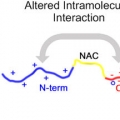
Molecular Role of Ca2+ and Hard Divalent Metal Cations on Accelerated Fibrillation and Interfibrillar Aggregation of α-Synuclein
Jong Yoon Han(박사과정) / Tae Su Choi(Post doc.) α-Synuclein (αSyn) is an intrinsically disordered protein, the aggregation of which is highly related to the pathology of diverse α-synucleinopathies. Various hard divalent metal cations have... -
Read More

Supramolecular Modulation of Structural Polymorphism in Pathogenic α-Synuclein Fibrils Using Cu(II) Coordination
Tae Su Choi(Post doc.) / Jong Yoon Han(박사과정) Structural variation of α-synuclein (αSyn) fibrils has been linked to the diverse etiologies of synucleinopathies. However, little is known about what specific mechanism provides αSyn fibrils... -
Read More

Recent Progress in the Chemistry of Pyridazinones for Functional Group Transformations
Seohyun Kang(석사과정) While N-hetereocycles have received significant attention in organic synthesis and other research fields, the chemistry of pyridazine, six-membered aromatic ring with adjacent two nitrogen atoms, and its derivatives ... -
Read More

Maskless Arbitrary Writing of Molecular Tunnel Junctions
Seo Eun Byeon(석사과정) / Miso Kim(석사과정) Since fabricating geometrically well-defined, noninvasive, and compliant electrical contacts over molecular monolayers is difficult, creating molecular-scale electronic devices that function in h... -
Read More
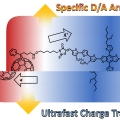
Single Component Organic Solar Cells Based on Oligothiophene-Fullerene Conjugate
Thanh Luan Nguyen(Post doc.) A new donor (D)–acceptor (A) conjugate, benzodithiophene-rhodanine–[6,6]-phenyl-C61 butyric acid methyl ester (BDTRh–PCBM) comprising three covalently linked blocks, one of p-type oligothiophene containing BDTRh... -
Read More
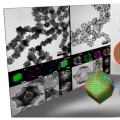
Lanthanide metal-assisted synthesis of rhombic dodecahedral MNi (M=Ir and Pt) nanoframes toward efficient oxygen evolution catalysis
Haneul Jin(박사과정) / Yongju Hong(박사과정) Mixed metal alloy nanoframeworks have shown a great promise as electrocatalysts in water electrolyzers and fuel cells. Although a limited number of mixed metal alloy nanoframeworks have been synt... -
Read More

Radially Phase Segregated PtCu@PtCuNi Dendrite@Frame Nanocatalyst for the Oxygen Reduction Reaction
Hyukbu Kwon(석사과정) / Jongsik Park(박사과정) Pt-based alloy nanoframes have shown a great potential as electrocatalysts toward oxygen reduction reaction (ORR) in fuel cells. However, the intrinsically infirm nanoframes could be severely d... -
Read More

Collision Cross Sections and Ion Structures: Development of a General Calculation Method via High-quality Ion Mobility Measurements and Theoretical Modeling
Ion mobility mass spectrometry (IM-MS) has become an important tool for the structural investigation of ions in the gas phase. Accurate theoretical evaluation of ion collision cross sections (CCSs) is essential for the effective application... -
Read More

Total Syntheses of Arcyriaflavin A and Calothrixin B Using 2,2′-Bisindole-3-acetic Acid Derivative as a Common Intermediate
Sungjong Lee(석사과정) / Kyung-Hee Kim(박사과정) A new protocol for the synthesis of 2,2′-bisindole-3-acetic acid derivatives from aldimines derived from 2-aminocinnamic acid derivatives and indole-2-carboxaldehyde was developed via a cyani... -
Read More

Synthesis, Characterization, and Efficient Catalytic Activities of a Nickel(II) Porphyrin: Remarkable Solvent and Substrate Effects on Participation of Multiple Active Oxidants
A new nickel(II) porphyrin complex, [NiII(porp)] (1), has been synthesized and characterized by 1H NMR, 13C NMR and mass spectrometry analysis. This NiII porphyrin complex 1 quantitatively catalyzed the epoxidation reaction of a wide range o... -
Read More

Molecular Insights into Human Serum Albumin as a Receptor of Amyloid-β in the Extracellular Region
Tae Su Choi(Post doc.) Regulation of amyloid-β (Aβ) aggregation by metal ions and proteins is essential for understanding the pathology of Alzheimer’s disease (AD). Human serum albumin (HSA), a regulator of metal and protein transportation,... -
Read More

Two Regioisomeric π-Conjugated Small Molecules: Synthesis, Photophysical, Packing and Optoelectronic Properties
Two Regioisomeric π-Conjugated Small Molecules: Synthesis, Photophysical, Packing and Optoelectronic Properties Dae Hee Lee(박사과정) / Thanh Luan Nguyen(Post doc.) Two regioisomeric D1-A-D-A-D1 type π-conjugated molecules (1,4-bis{5-[4-(5-f... -
Read More

Major Electronic Transition Shift from Bandgap to Localized Surface Plasmon Resonance in CdxHg1-xSe Alloy Nanocrystals
Dongsun Choi(박사과정) / Bitna Yonn(석사과정) CdxHg1-xSe alloy nanocrystals are obtained from CdSe semiconductor nanocrystals via cation exchange. By varying the composition during the exchange process, the CdxHg1-xSe alloy nanocrystals off... -
Read More

Rational Design of In Vivo Tau Tangle-Selective Near Infrared Fluorophores: Expanding the BODIPY Universe
The elucidation of the cause of Alzheimer’s disease remains one of the greatest questions in neurodegenerative research. The lack of highly reliable low-cost sensors to study the structural changes in key proteins during the progres-sion of ... -
Read More

Achieving Highly Efficient Nonfullerene Organic Solar Cells with Improved Intermolecular Interaction and Open-Circuit Voltage
A new acceptor–donor–acceptor-structured nonfullerene acceptor ITCC (3,9-bis(4-(1,1-dicyanomethylene)-3-methylene-2-oxo-cyclopenta[b]thiophen)-5,5,11,11-tetrakis(4-hexylphenyl)-dithieno[2,3-d′:2,3-d′]-s-indaceno[1,2-b:5,6-b′]-dithiophene) is... -
Read More

Ionic effect on the excited-state proton transfer reactions in aqueous solutions
Proton dissociation (PD) reactions of weak acids and proton transfer (PT) processes in aqueous solution are strongly influenced by ions. However, a detailed molecular picture that describes how ions affect the rates for PD and PT processes i... -
Read More
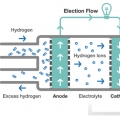
A conductive porous organic polymer with superprotonic conductivity of a Nafion-type electrolyte
As potential solid electrolytes in fuel cells, porous organic polymers show compelling proton conductivities (up to ∼10−2 S cm−1), but even higher performance is required for real applications. In this work, we prepared a biphenyl-based orga... -
Read More

Quantum optical measurements with undetected photons through vacuum field indistinguishability
Quantum spectroscopy and imaging with undetected idler photons have been demonstrated by measuring one-photon interference between the corresponding entangled signal fields from two spontaneous parametric down conversion (SPDC) crystals. In ... -
Read More

Nanoscale Control of Amyloid Self-Assembly Using Protein Phase Transfer by Host-Guest Chemistry
Amyloid fibrils have recently been highlighted for their diverse applications as functional nanomaterials in modern chemistry. However, tight control to obtain a targeted fibril length with low heterogeneity has not been achieved because of ... -
Read More

A Mitochondria-targeted Cryptocyanine-Based Photothermogenic Photosensitizer
Cryptocyanine-based probes exhibit highly efficient photothermal conversion and represent a new class of photothermal agents for use in photothermal therapy (PTT). With the thermal susceptibility of mitochondria in mind, we have prepared a m...

